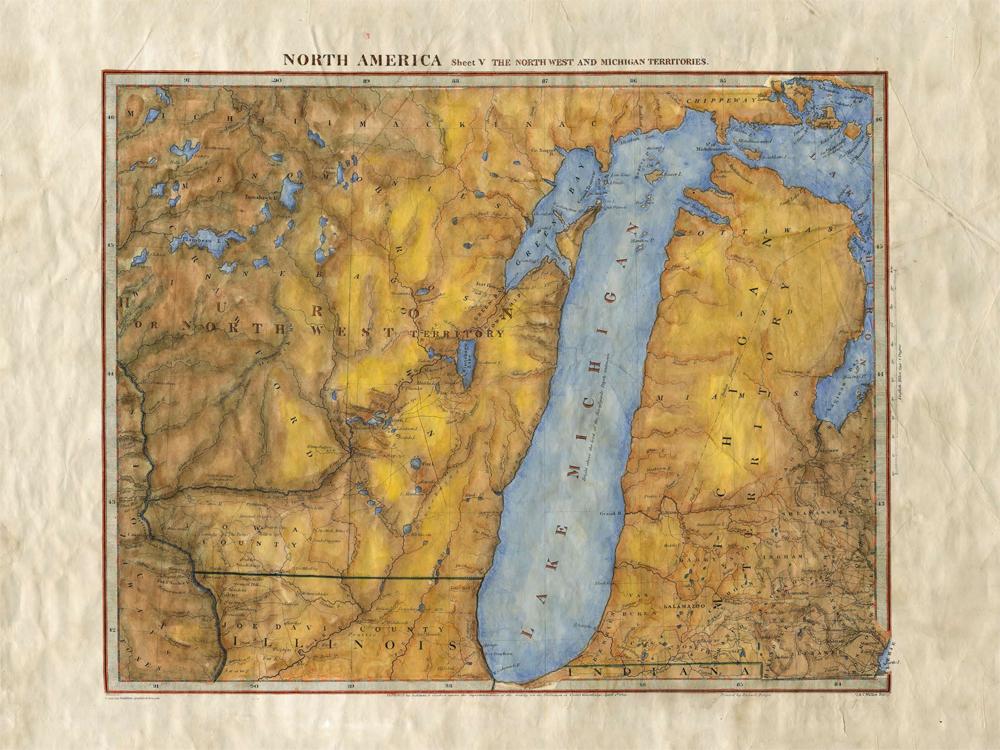
067 Lake Michigan and eastern Wisconsin
This 1833 antique map of Michigan and Wisconsin shows a Michigan that looks a bit different than what we are used to seeing today. It is slightly skewed on it's vertical axis, yet still recognizable. The highlight of the map is Lake Michigan itself. It happens to be the only one of the five Great Lakes that has its boundaries completely contained within the United States. County boundary marks are clearly identified in color. Rivers are easily seen and detailed out as well as portions Illinois and the territories. This was a time when fur trading was on its downward slide, yet still had roots and purpose in the northern states. This would have been useful as a trade map, but it serves a greater historical purpose too. Of significance are the Indian tribes that are noted. These include the Chippewa and Ottawa tribes. You also notice the Bad Axe river identified on the map as well. This river is most famous for the Bad Ax Massacre that was fought at the end of the Black Hawk war of 1832. This war ended a year before this map was produced. The wars in and of themselves were a battle between the United States militia and the Indian tribes that were native to the Americas, known as the Sauk and
Fox. There was a dispute over the ceded lands and the massacre happened shortly thereafter. It seemed that land was ceded to the United States that the Indians had hoped to settle on. The dispute erupted into an all out, bloody war.
The war could not have happened at a worse time either. Moral was already a bit low since the battle of Wisconsin had just ended. This only served to make all matters worse. It was a bloody time for the states. The most memorable part of this war is the fact that this is where a young Abraham Lincoln provided his service in the military. Though short lived, his involvement was key and would later serve as a political selling point during his many runs for congress and the presidency.
Another interesting note, this map was produced by the S.D.U.K., which stood for the Society for the Diffusion of Useful Knowledge. The organization was founded in the early 1800's by the whigs. The purpose was to spread information on topics such as science and geography in a wide manner to make it available to the general public. The US started its own Society after the same name in around the same time. It held such noteworthy individuals as Ralph Waldo Emerson. But it was lampooned by Henry David Thoreau who suggested an organization be started that would carry the name, “Society for the Diffusion of Useful Ignorance”.
The cartographers, Baldwin and Craddock were first contracted to produce maps for the Atlas that would be used by the SDUK. However, upon their bankruptcy, the Society completely took over production of the Atlas and was able to preserve the work you see
here. Though it may have been an attempt at an early sort of Montessori self education, the SDUK did prove useful if for no other reason than preserving a piece of history gleaned from a defunct cartographer outfit.
All sizes are approximate.
